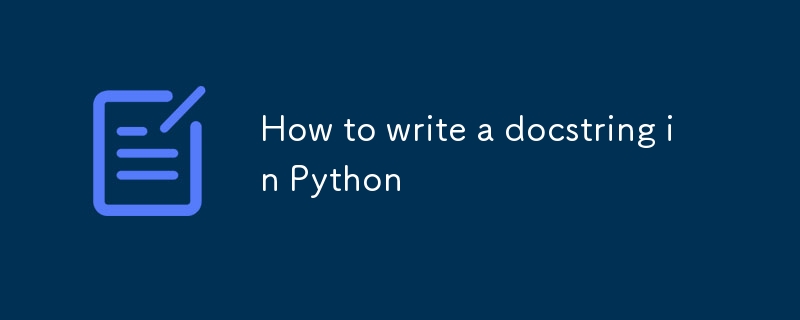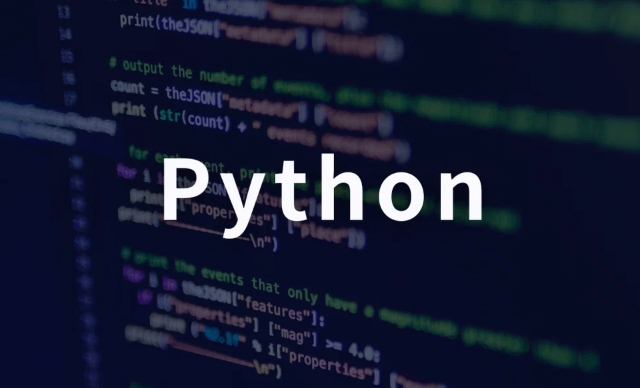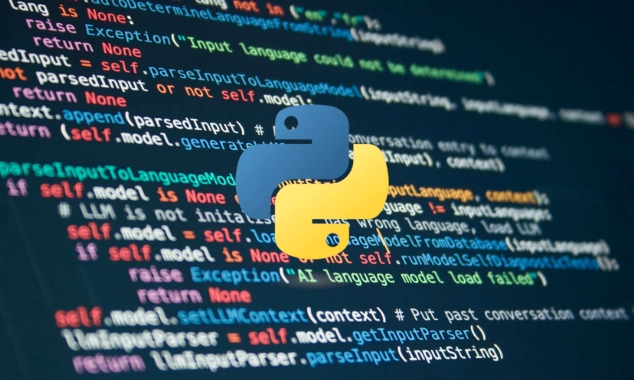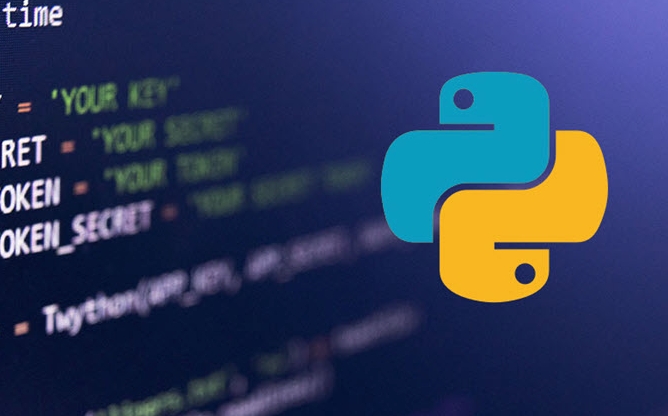The key to writing a good Python docstring is to follow norms, unify styles, include necessary information and use tools to assist. 1. Follow the basic specifications of PEP257, use three quotes to wrap the contents, briefly explain the function in the first sentence, and describe the parameters and return values in detail after emptying a line. 2. Choose a common style such as Google Style and keep it unified to improve readability and collaboration efficiency. 3. Contains key information such as function description, parameter type and meaning, return value type and meaning, and adds exception descriptions and example usage depending on the situation. 4. Use the editor plug-in to automatically generate templates and check the format through tools such as pydocstyle to ensure the correctness of the specification.

It is actually not difficult to write a good docstring of Python, but many people either ignore its importance or write it in a standardized manner. A clear, standard docstring can help you and others quickly understand the functions of functions, classes, or modules, and can also be recognized by automatic document tools such as Sphinx to generate documents.

Below are some practical suggestions to teach you how to write a useful and standardized docstring.
1. Follow the basic specifications of PEP257
Python has some basic requirements for docstring, the most basic one is:

- Use three quotes (
""") to wrap the content - The beginning sentence is concise to explain the function, and then describe it in detail after empty line
- Don't write "This is a certain function", but directly explain the purpose
for example:
def add(a, b):
"""Return the sum of a and b.
Args:
a (int): first number
b (int): second number
Returns:
int: sum of a and b
"""
return abThe first sentence is a summary, followed by an explanation of the parameters and return values. This writing is not only clear, but also facilitates tool analysis.

2. Choose a style to use it uniformly
There are three common docstring formats: PEP257 default style, reST (reStructuredText), Google Style and NumPyDoc . Among them, Google style is relatively easy to read and is suitable for beginners.
For example, Google style:
def multiply(a, b):
"""Multiply two integers and return the result.
Args:
a (int): The first number.
b (int): The second number.
Returns:
int: The product of a and b.
"""
return a * bYou can choose styles based on team specifications or project requirements, and the key is to maintain consistency.
3. Include key information, don't miss the key points
A good docstring should include the following points (not necessarily each one needs to be included, depending on the situation):
- Function description
- Parameter type and meaning
- Return value type and meaning
- Possible exception (if any)
- Example usage (optional)
Especially for parameters and return values, you must clearly write the type and function. This is especially important when collaborating with multiple people.
If you are not sure how to write it, you can refer to the standard library or popular open source projects, such as requests or pandas .
4. Use tools to check and generate docstring
Some editor plugins can help you automatically generate templates, such as:
- Python Docstring Generator for VS Code
- PyCharm comes with docstring template support
These tools can help you save time and avoid format errors. In addition, you can use pydocstyle or flake8-docstrings to check whether your docstring complies with the specification.
Basically that's it. Writing docstring does not take too much time, but the benefits are very real - it can be smoother whether you are looking back on the code yourself or others call the interface. As long as you stick to one style and write down the key information clearly, it will be great.
The above is the detailed content of How to write a docstring in Python. For more information, please follow other related articles on the PHP Chinese website!

Hot AI Tools

Undress AI Tool
Undress images for free

Undresser.AI Undress
AI-powered app for creating realistic nude photos

AI Clothes Remover
Online AI tool for removing clothes from photos.

Clothoff.io
AI clothes remover

Video Face Swap
Swap faces in any video effortlessly with our completely free AI face swap tool!

Hot Article

Hot Tools

Notepad++7.3.1
Easy-to-use and free code editor

SublimeText3 Chinese version
Chinese version, very easy to use

Zend Studio 13.0.1
Powerful PHP integrated development environment

Dreamweaver CS6
Visual web development tools

SublimeText3 Mac version
God-level code editing software (SublimeText3)

Hot Topics
 How to handle API authentication in Python
Jul 13, 2025 am 02:22 AM
How to handle API authentication in Python
Jul 13, 2025 am 02:22 AM
The key to dealing with API authentication is to understand and use the authentication method correctly. 1. APIKey is the simplest authentication method, usually placed in the request header or URL parameters; 2. BasicAuth uses username and password for Base64 encoding transmission, which is suitable for internal systems; 3. OAuth2 needs to obtain the token first through client_id and client_secret, and then bring the BearerToken in the request header; 4. In order to deal with the token expiration, the token management class can be encapsulated and automatically refreshed the token; in short, selecting the appropriate method according to the document and safely storing the key information is the key.
 How to test an API with Python
Jul 12, 2025 am 02:47 AM
How to test an API with Python
Jul 12, 2025 am 02:47 AM
To test the API, you need to use Python's Requests library. The steps are to install the library, send requests, verify responses, set timeouts and retry. First, install the library through pipinstallrequests; then use requests.get() or requests.post() and other methods to send GET or POST requests; then check response.status_code and response.json() to ensure that the return result is in compliance with expectations; finally, add timeout parameters to set the timeout time, and combine the retrying library to achieve automatic retry to enhance stability.
 Python variable scope in functions
Jul 12, 2025 am 02:49 AM
Python variable scope in functions
Jul 12, 2025 am 02:49 AM
In Python, variables defined inside a function are local variables and are only valid within the function; externally defined are global variables that can be read anywhere. 1. Local variables are destroyed as the function is executed; 2. The function can access global variables but cannot be modified directly, so the global keyword is required; 3. If you want to modify outer function variables in nested functions, you need to use the nonlocal keyword; 4. Variables with the same name do not affect each other in different scopes; 5. Global must be declared when modifying global variables, otherwise UnboundLocalError error will be raised. Understanding these rules helps avoid bugs and write more reliable functions.
 Python FastAPI tutorial
Jul 12, 2025 am 02:42 AM
Python FastAPI tutorial
Jul 12, 2025 am 02:42 AM
To create modern and efficient APIs using Python, FastAPI is recommended; it is based on standard Python type prompts and can automatically generate documents, with excellent performance. After installing FastAPI and ASGI server uvicorn, you can write interface code. By defining routes, writing processing functions, and returning data, APIs can be quickly built. FastAPI supports a variety of HTTP methods and provides automatically generated SwaggerUI and ReDoc documentation systems. URL parameters can be captured through path definition, while query parameters can be implemented by setting default values ??for function parameters. The rational use of Pydantic models can help improve development efficiency and accuracy.
 Python for loop with timeout
Jul 12, 2025 am 02:17 AM
Python for loop with timeout
Jul 12, 2025 am 02:17 AM
Add timeout control to Python's for loop. 1. You can record the start time with the time module, and judge whether it is timed out in each iteration and use break to jump out of the loop; 2. For polling class tasks, you can use the while loop to match time judgment, and add sleep to avoid CPU fullness; 3. Advanced methods can consider threading or signal to achieve more precise control, but the complexity is high, and it is not recommended for beginners to choose; summary key points: manual time judgment is the basic solution, while is more suitable for time-limited waiting class tasks, sleep is indispensable, and advanced methods are suitable for specific scenarios.
 Python for loop over a tuple
Jul 13, 2025 am 02:55 AM
Python for loop over a tuple
Jul 13, 2025 am 02:55 AM
In Python, the method of traversing tuples with for loops includes directly iterating over elements, getting indexes and elements at the same time, and processing nested tuples. 1. Use the for loop directly to access each element in sequence without managing the index; 2. Use enumerate() to get the index and value at the same time. The default index is 0, and the start parameter can also be specified; 3. Nested tuples can be unpacked in the loop, but it is necessary to ensure that the subtuple structure is consistent, otherwise an unpacking error will be raised; in addition, the tuple is immutable and the content cannot be modified in the loop. Unwanted values can be ignored by \_. It is recommended to check whether the tuple is empty before traversing to avoid errors.
 How to parse large JSON files in Python?
Jul 13, 2025 am 01:46 AM
How to parse large JSON files in Python?
Jul 13, 2025 am 01:46 AM
How to efficiently handle large JSON files in Python? 1. Use the ijson library to stream and avoid memory overflow through item-by-item parsing; 2. If it is in JSONLines format, you can read it line by line and process it with json.loads(); 3. Or split the large file into small pieces and then process it separately. These methods effectively solve the memory limitation problem and are suitable for different scenarios.
 Sending emails from Python script
Jul 12, 2025 am 12:18 AM
Sending emails from Python script
Jul 12, 2025 am 12:18 AM
TosendemailsusingPython,usethesmtplibandemaillibraries.1)SetupSMTPwithserverdetailsandlogincredentials.2)ComposetheemailusingEmailMessagetosetcontent,subject,sender,andrecipient.3)Sendthemessageviaserver.send_message()andclosetheconnectionwithserver.






